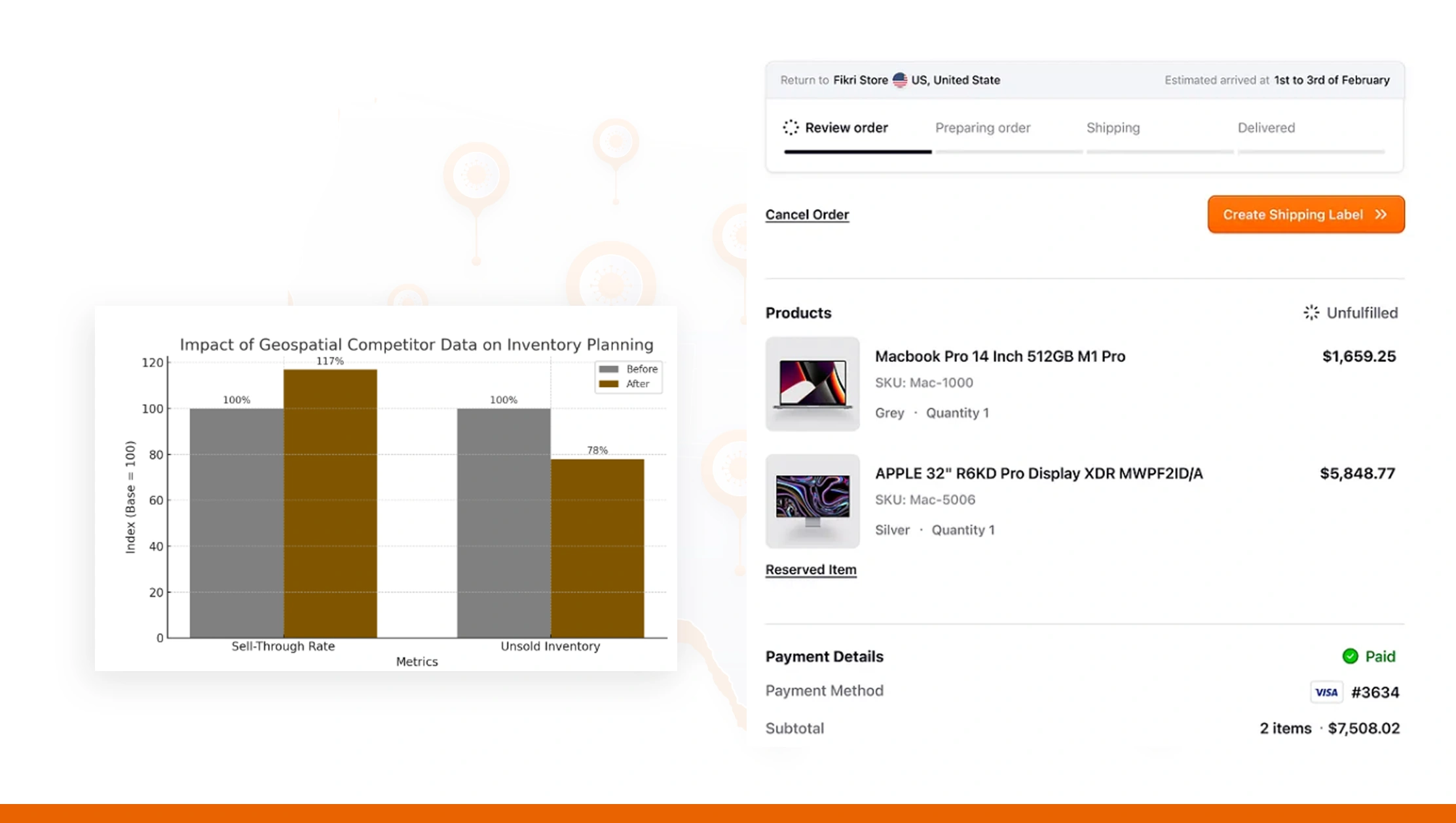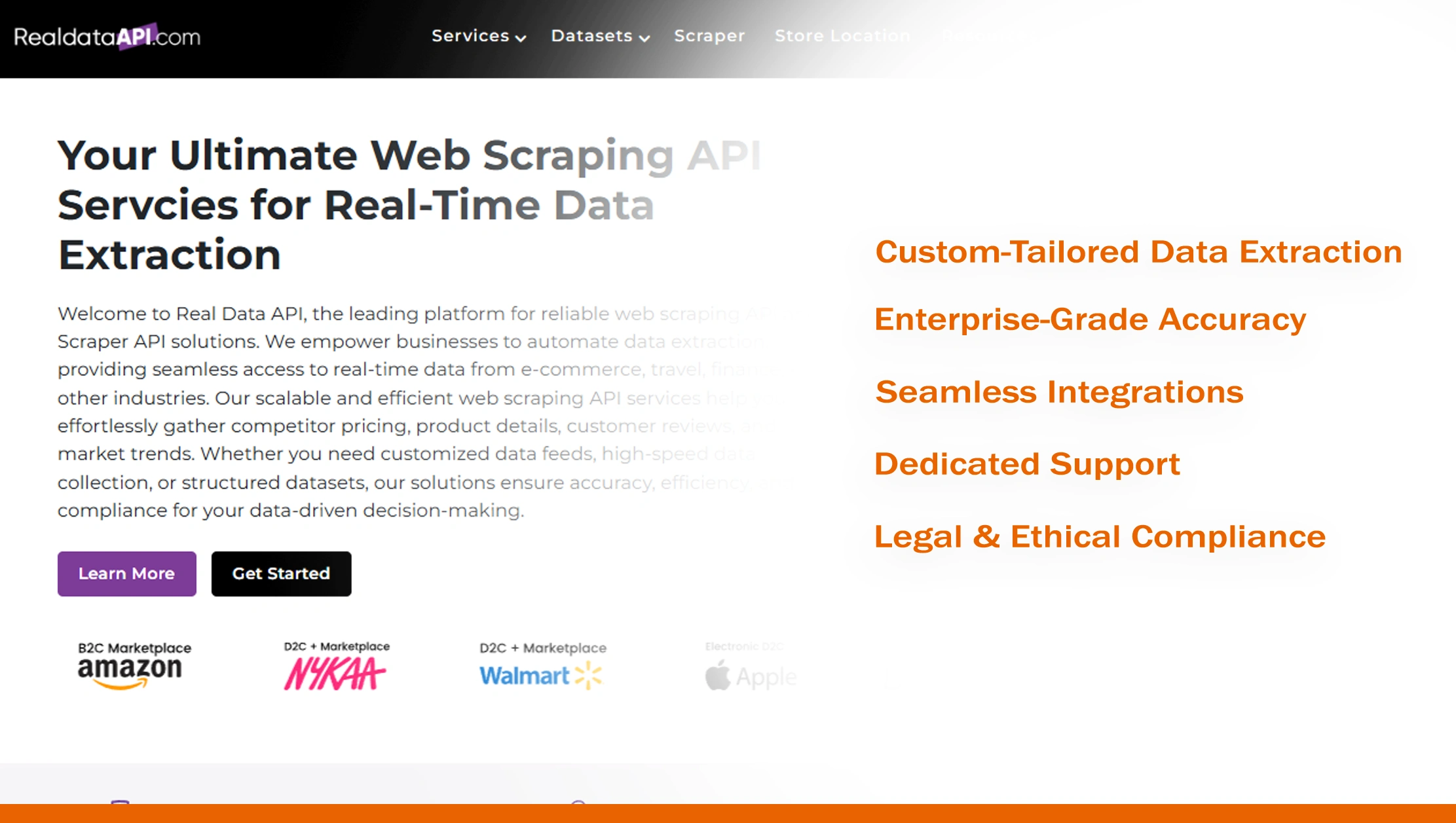

Introduction
In the dynamic world of retail, few things are as vital to long-term profitability as mastering inventory placement. One of the most overlooked but highly valuable assets in strategic decision-making is location-based competitor data. For U.S.-based retailers or brands looking to optimize stock levels across multiple regions, Sears store locations data scraping USA can be a powerful advantage.
Sears, a longstanding player in the American retail ecosystem, still maintains dozens of locations across states—especially in suburban and secondary cities. These locations offer invaluable clues about consumer behavior, local purchasing trends, market saturation, and underserved regions. Whether you’re a D2C brand, multi-location retailer, real estate analyst, or logistics manager, tapping into this data opens up new ways to optimize regional planning.
Let’s explore how Sears store locations data scraping USA provides real-world solutions to some of the most common challenges in retail distribution.
Why Is Regional Inventory Planning So Critical in 2025?

Regional inventory planning allows companies to adapt their supply chains, pricing, marketing, and product selection to match specific local conditions.
According to a 2025 study by McKinsey & Co., retailers that used geospatial competitor data in inventory planning saw a 17% increase in sell-through rate and a 22% drop in unsold inventory.
Here's why localized planning is essential in today's market:
- Customer expectations for fast delivery (same-day/next-day) demand inventory be placed closer to demand centers.
- Consumer preferences vary widely by region, driven by weather, culture, income, and demographics.
- Distribution costs can vary drastically depending on warehousing distances and delivery feasibility.
- Competitor proximity heavily influences buying decisions and pricing strategies.
Leveraging tools like Scraping Sears store Locations Data USA gives you a real-time view into how one of the oldest retail networks operates on a geographic level.
Unlock retail success with accurate Sears store location data—scrape smarter, plan better, and boost regional inventory performance today!
Get Insights Now!What Is Sears Store Locations Data Scraping USA?
Let’s start with the basics. Sears store locations data scraping USA refers to the automated extraction of public location-related data from Sears websites, maps, and third-party aggregators. This data is transformed into structured datasets that can be analyzed for decision-making.
Common Fields Extracted:
| Data Field | Description |
|---|---|
| Store Name | Sears, Sears Outlet, Sears Hometown, etc. |
| Full Address | Street, City, Zip Code, State |
| GPS Coordinates | Latitude and Longitude for mapping or route optimization |
| Store Category | Retail, Outlet, Appliance-Only, Closed/Relocated |
| Contact Info | Phone number, customer service hours |
| Opening Hours | For business hour segmentation |
| Nearby Points | Landmarks, competitors, malls, foot traffic zones |
The process of Web Scraping Sears store locations USA results in a rich dataset that allows you to visualize, compare, and correlate physical store presence with your own operations and market potential.
1. Optimizing Inventory Distribution Based on Store Density
One of the most effective uses of this data is aligning your inventory placement with areas of retail density.
For instance:
- The Midwest still hosts a notable cluster of Sears stores, especially in Illinois, Michigan, and Indiana.
- The Pacific Northwest has far fewer Sears locations, indicating either lower demand or competitive dominance by other chains.
As a retailer, if your distribution center is in a location like Columbus, OH (within reach of multiple Sears stores), your strategy could be:
- Stock home appliances, tools, and DIY products heavily in this region to match Sears’ category strengths.
- Alternatively, target products not sold by Sears in that region to avoid direct competition.
This granular approach ensures inventory allocation is driven by local demand signals—not national averages.
2. Forecasting Regional Demand Through Historical Store Trends
A key benefit of Sears store locations data scraping USA is identifying emerging or declining markets through store presence over time.
Example Scenario:
By comparing store data from 2020 to 2025:
- If Sears reduced store count in a specific zip code by 50%, it may indicate reduced footfall or shrinking purchasing power.
- On the flip side, sustained store presence in a mid-size city may signal a loyal customer base or steady demand.
You can cross-reference this data with product-level sales or consumer demographic data to predict:
- Where demand is likely to grow
- Which SKUs should be prioritized
- Whether to increase safety stock in a given zone
This predictive model reduces excess inventory and ensures high-margin products are always stocked in the right regions.
3. Enhancing Competitor Analysis & Expansion Decisions
Using a Sears store locations Extractor USA, you can evaluate your market position against one of the oldest competitors in American retail.
Use Cases:
- Real estate teams can avoid oversaturated areas or capitalize on gaps in Sears’ presence.
- Product teams can benchmark pricing and assortments in cities where Sears still operates.
- Franchise owners or D2C brands can identify white-space regions with no major retail competition.
Let’s say you’re a regional player in the Midwest planning to open 5 new outlets. By scraping Sears data and mapping store distance, traffic, and local demand, you can:
- Choose locations at least 10–15 miles away from existing Sears stores
- Identify underserved suburbs where Sears has exited
- Place inventory based on Sears’ category gaps
This eliminates guesswork in expansion and gives you a powerful location strategy edge.
4. Precision in Regional Marketing Campaigns
Imagine knowing where your competitor operates down to the zip code—and being able to respond with geo-targeted ads. That’s what Sears store locations data scraping USA enables.
For example:
- Google and Facebook Ads can be hyper-targeted around Sears locations offering similar SKUs.
- You can create custom offers and loyalty programs for shoppers near those stores.
- Local partnerships, events, or influencer marketing can be launched in markets Sears already serves.
Retailers can even A/B test promotions:
- “Offer A” in markets with Sears
- “Offer B” in areas without Sears
and track which performs better.
This is a game-changer for omnichannel retailers balancing online and offline strategies.
5. Improving Supply Chain Efficiency & Last-Mile Logistics
Supply chain managers constantly seek ways to reduce costs while maintaining service levels. The Store location USA dataset helps design optimal delivery routes and warehouse locations.
How It Helps:
- Use store coordinates to calculate drive times and transport costs to/from regional hubs.
- Map store clusters to determine central warehouse feasibility.
- Integrate with third-party logistics software to automate replenishment triggers.
If Sears has 5 stores within 30 miles of your facility, it may signal that area has strong retail potential and infrastructure support. You can use this to your advantage in optimizing your last-mile strategy.
6. Enabling Advanced Data-Driven Decisions for Retail AI
Beyond standard analytics, Web Scraping Sears store locations USA provides raw data for AI models to forecast demand, map consumer journeys, and personalize product offerings.
Advanced retailers are now:
- Integrating store location data with demographic models to forecast sales potential
- Training machine learning algorithms to allocate stock based on distance-to-store analysis
- Powering retail dashboards with live map views of Sears and competitor locations
This helps businesses move from reactive planning to predictive optimization—something essential in a competitive landscape driven by data.
Get precise Sears store location insights—scrape data effortlessly to power smarter retail strategies, regional planning, and competitor analysis today!
Get Insights Now!Why Choose Real Data API?

Real Data API isn’t just another scraping tool—we’re your strategic data partner. When it comes to Sears store locations data scraping USA, our clients choose us for:
Custom-Tailored Data Extraction
You get more than just store names—we extract hours, categories, nearby competition, and more, tailored to your needs.
Enterprise-Grade Accuracy
Our advanced scraping infrastructure ensures 99.9% data accuracy, with automated freshness checks and historical comparisons.
Seamless Integrations
All data can be delivered via REST API, CSV, Excel, or JSON, ready to plug into your ERP, CRM, or BI system.
Dedicated Support
From setup to scaling, our engineers and data scientists provide end-to-end assistance for your project.
Legal & Ethical Compliance
We maintain transparency and compliance, ensuring your scraping strategy is secure, scalable, and aligned with U.S. data guidelines.
Whether you need monthly updates, real-time tracking, or API access to competitor datasets, Real Data API ensures your business is always backed by the most accurate, actionable location intelligence.
Conclusion
By tapping into this dataset, retailers gain visibility into one of America's most historically significant retail footprints—and can use it to shape smarter, faster, and more profitable decisions.
Need accurate and up-to-date Sears store location data tailored to your business? Contact Real Data API today and transform retail challenges into growth opportunities!















